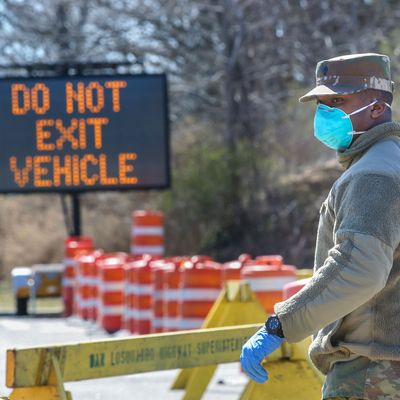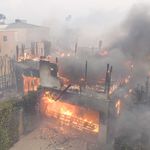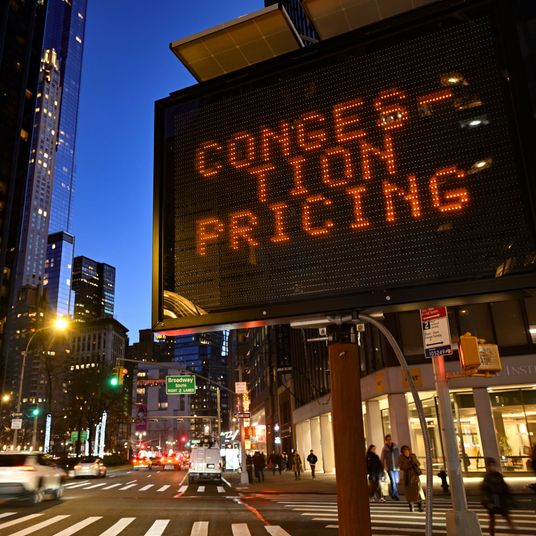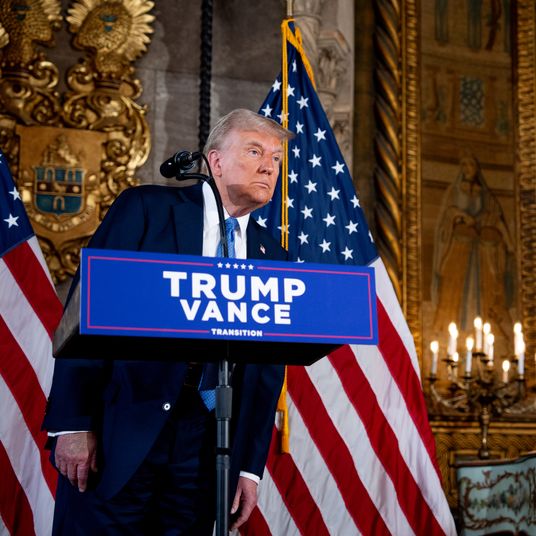
A bit before midnight on January 20, a Harvard epidemiologist named Eric Feigl-Ding posted a long, terrifying Twitter thread mostly summarizing, and in a few places contextualizing, a new, pre-publication paper on the infectiousness of the novel coronavirus that had, at the time, forced Wuhan into a total lockdown but had not yet been detected outside of China. The context he added was, mostly, alarmism.
“Holy mother of god,” the thread began, “the new coronavirus is a 3.8!!!” That figure referred to what’s called the reproduction number, or “R0,” of a disease: how many people would be infected by a single sick person. “I really hate to be the epidemiologist who has to admit this, but we are potentially faced with … possibly an unchecked pandemic that the world has not seen since the 1918 Spanish Influenza. Let’s hope it doesn’t reach that level but we now live in the modern world 🌎 with faster ✈️+ 🚞 than 1918. @WHO and @CDCgov needs to declare public health emergency ASAP!”
The thread has since been deleted, though you can still read a preserved version of it here. It was, for many Americans, if not the first time they had heard of coronavirus, perhaps the first time they had seen a global alarm raised over it. And in doing so, it produced what is by now a sort of predictable backlash: other scientists and science journalists taking issue with it, en masse, pointing out that the paper had not yet been published; that Feigl-Ding’s comparison to the infection rate of SARS was inaccurate; that most estimates of the R0 number were now lower than 3.8. Feigl-Ding’s tweets got more readers than those of his critics’. But those credentialed in epidemiology and public health were much more likely to see the criticism as sober and responsible, Feigl-Ding himself as an irresponsible alarmist, and the impulse to raise alarm a deeply reckless one. An Atlantic story about it was headlined “How to Misinform Yourself About the Coronavirus.”
Two months later, we are, inarguably, in the midst of a global pandemic. It took three months for COVID-19 to reach 100,000 confirmed cases globally; ten more days to reach 200,000; just four more to reach 300,000, and three to reach 400,000. And while the “true” R0 number is hard to pin down in the real world, where it reflects social practices and cultural mores (and can be dramatically reduced by social distancing), an authoritative recent report from the Imperial College (the one that alarmed Boris Johnson enough to back off of his “herd immunity” plan and Donald Trump enough to stop dismissing the coronavirus and start using it to sell himself, laughably, as a wartime president) suggested that the R0 value of COVID-19 could be as high as 3.5 — proposing a likely range of 1.5 to 3.5. Other estimates are as high as 4.08 and above. Those estimates are probably too high, at least as models to predict the spread of the virus in a world now belatedly awake to it and taking at least some precautions against it. But the same Imperial College report suggested that even with efforts to mitigate the spread of the virus in the U.S., more than a million Americans may die. In just two months, what sounded like hysteria to scolding experts has become conventional wisdom among even cautious epidemiologists. “We’re looking at something that’s catastrophic on a level that we have not seen for an infectious disease since 1918,” Dr. Jeffrey Shaman, a Columbia professor projecting the spread of the virus, told the New York Times on Friday. Where had I read that before?
There may be particular questions, in other words, about particular data points and comparisons contained in Feigl-Ding’s rushed thread — though it’s worth pointing out that even in the initial thread, he suggested the true R0 might be closer to 2.5, and in subsequent tweets corrected the other points. And the broad message? The purposeful incitement of public alarm? If the question is whether Feigl-Ding was right to be alarmed by what he was reading, whether alarm was an appropriate response to what we knew even then about the infectiousness and lethality of this disease, and whether it was therefore responsible to induce panic in the public, we can say — with the benefit of hindsight, yes, but also definitively — it was. And if the question is whether, on January 20, the world as a whole should have freaked out considerably more about the coronavirus, initiating emergency planning and launching medical preparation on a war footing immediately, the answer, eight weeks later, is blindingly obvious: Yes, of course we should have, and we would all be in a much better, safer, and probably more prosperous place if we had.
Today, the world is almost a controlled experiment in pandemic response, and the returns are already unmistakable: The nations that took the most aggressive actions, most quickly, have fared best, and those that have moved cautiously, waiting for undeniable prompts to action, have done worst. In South Korea, the implementation of what is effectively a medical surveillance state means that life in most of the country has continued mostly undisrupted, at least by the standards of Wuhan or the lockdowns now in Lombardy and New York and San Francisco; in the U.K. a strategy to stand down and let the virus pass through the population proved so disastrous that, within a few weeks, it was abruptly reversed; in Iran, they are digging mass graves big enough to be seen from space.
These divergent approaches are explained by more than just divergent levels of alarm, of course. The political authority of Xi Jinping and the CCP made it somewhat easier to impose a citywide shutdown in China than in the U.S., though the swift shutdowns of the last week here makes the difference seem less dramatic than Americans would have assumed before the coronavirus panic. The experience of many Asian countries with SARS beginning in 2002 meant that they were already used to handwashing and social distancing as preventive measures, and could turn to a public-health infrastructure (mass testing, fever hospitals) that had been developed in response to SARS in ways countries like the U.S. couldn’t. But the American failure to respond and prepare properly cannot be explained by differences like those — nor can the failure of nations from Iran to Italy and the U.K. to Spain. And if Eric Feigl-Ding, or anyone with his level of alarm, had been running pandemic response in any of those countries on January 20, every single one of them would be, today, immeasurably better off, having initiated (at the very least) the same social-distancing approaches, testing protocols, and personal protective equipment and ventilatory production we are now hoping for and scrambling to produce, but six weeks or more earlier — choking off six additional weeks of pandemic growth. A recent report suggested that if China had acted aggressively to contain the outbreak when it first appeared in late fall, 95 percent of the country’s cases could have been avoided — as well as, possibly, the international outbreak that followed. In other words, a Feigl-Ding level of alarm, enacted into public-health policy at the right time, could have prevented the entire global pandemic crisis, and kept COVID-19 a regional health story in just one country of the world.
Hindsight is 20/20, of course, and there are surely plenty of situations where we would want to guard against overreactions as zealously, or more zealously, as we would underreactions. But in a time of good governance, this is a central function of government: to prepare for the risks that the public can’t process rationally. And though we often feel, on social media especially, that we live swimming in a sea of alarm, it may be the case, instead, that the general din prevents us from hearing real cries of alarm by teaching us that almost anybody raising their voice above the crowd is a nut, or a narcissist, or a troll.
This is bad. As I’ve written before about climate change, when the news is alarming, the only responsible response is to be alarmed — and raise alarm. And like runaway climate change, the threat of a global pandemic, which graybeards have been warning about for years, is a reminder that we should always build public policy around the precautionary principle, rather than waiting until uncontestable and inarguable evidence arrives that action is necessary. If we wait that long, it will always be too late. Would it have been better if Feigl-Ding’s tweet thread had made a more precisely accurate comparison to SARS, and included some more caveats around the R0 3.8 figure? Perhaps. But science proceeds by increments, and in times of rapid, onrushing crisis the direction is important, too, not just the degree. The fact that we are now living more or less precisely through the situation Feigl-Ding warned us about in January suggests that two months ago we should have understood that this outcome was, at the very least, a possibility, and therefore worth planning for — rather than dismissing it as irresponsible fearmongering.
This is not a story of a single whistle-blower, of course, not a David and Goliath story in which Feigl-Ding was positioned across from Donald Trump. Anyone who looked closely at the emerging science of the disease or understood long-standing public-health fears about global pandemics was alarmed. But that alarm was almost entirely unheard by the powers that be, and not just in Washington, D.C. The fact that the White House didn’t prepare the country for the assault of this disease beginning in January is a catastrophic failure that has led to a moral and medical horror that will continue to mount, body by body, in the weeks and months ahead. But the fact that the U.S. is not at all alone in failing to heed the call of alarm suggests that the problem is deeper — and broader — than the president in charge of our government or the bureaucracy he oversees. Among European countries, only Germany could claim to have mustered even a “satisfactory” response, and none an exemplary one. Last week, the Washington Post reported on all the intelligence warnings about coronavirus President Trump received, and dismissed, over the winter. Given that much of the substance of those warnings was also being reported simultaneously in the world’s newspapers, it is safe to say the leaders of Italy, and France, and Spain were also given briefings in which the alarm was unmistakably sounded, but refused to hear it.
So, what happened? Why were so few sufficiently alarmed about the threat as it emerged, and why were those raising the alarm largely dismissed or sidelined? Aside from perhaps some amount of heightened personal anxiety and a few more fights in supermarket aisles over bundles of toilet paper, it’s hard to see a meaningful cost that heightened public anxiety about this virus would have produced over the last few months. But as I often say about the question of climate anxiety, if you are worried about the psychic cost of contemplating a bleak future, surely you should be more worried about the psychic cost of living through it, should we do nothing to avoid it. And, especially in the absence of public leadership, with the country and indeed much of the world operating in a vacuum of guidance that forced individuals to make possibly dangerous social choices entirely on their own, it’s very easy to see what benefit more public alarm about COVID-19 would have produced: more handwashing, and of a more vigorous kind; more temperature-checking; more isolation by those who felt a little sick; more voluntary social distancing, and then, when public “shelter in place” orders began finally to arrive, more complete honoring of those orders. Instead, almost everywhere in Western Europe and the U.S., we have chosen to be less alarmed. Already, that has proven a deadly choice.
It was also a needless one. And, unfortunately, unsurprising. Writers and thinkers often use the phrase “wicked problem” to describe the challenge of climate change, driven by so many divergent interests and actors it can seem impossible to untangle even at a conceptual level, let alone a practical one. The philosopher Timothy Morton has coined the related term “hyperobject” — a conceptual fact so large and complex that, like the internet, it can never be properly comprehended. The present pandemic crisis takes all of those hard-to-wrap-your-head-around features and adds another — hyperspeed. Along with everything else, the pace of this pandemic has been dizzying. Patient zero was less than six months ago. Three months ago, you had probably never heard of the disease, and now, in the space of just a few weeks, it has completely upended your life and the lives of billions of others.
But there are more quotidian explanations for our indifference — indeed, these are probably the most powerful explanations. We are selfish, and don’t want to even entertain the possibility that what we take to be our “needs” could be threatened or taken away. As recently as a few weeks ago, even the most apocalyptic among us probably didn’t truly believe that devastation at such a scale was possible, that the little fortresses of our modern lives could be so assaulted by a distant virus. A virus! That was the sort of thing that threatened the global south, we thought, or was limited to the “wet markets” and exotic-animal-cuisine cultures of Asia we felt so culturally superior to. It is a cruel irony, if possibly a temporary one, that this pandemic, which promises to be the most deadly in a century, emerged not out of the tropics or the global south but was passed around the world along vectors of globalization and cosmopolitan wealth, and has not yet even passed into the parts of the world which, for centuries, Westerners regarded as diseased and pestilent. Instead it’s our imperious cities incubating this virus, and which may well unleash it soon on the impoverished nations of the world. (It’s not quite clear, from the biology and epidemiology, why the disease hasn’t yet spread much toward the equator and into the southern hemisphere).
Indeed to judge from our preparation, we still felt invulnerable just weeks, or even days, before lockdown. The bias wasn’t just cultural, but cognitive. We didn’t believe anything could happen that didn’t have a precedent in recent memory, having built up conceptual models of what was possible over periods of just a decade, in some cases less. We’d lost so much esteem for experts over the last few decades that we found it more comfortable to substitute our own nonexistent expertise and common-sense heuristics (“how much worse than SARS could it really be?”) than to trust those telling us this was different. Other relevant cognitive biases are familiar from behavioral psychology: what’s called the bystander effect (our tendency to wait for others to act rather than acting ourselves); confirmation bias, by which we seek evidence for what we already understand to be true, such as the promise that everything will be fine, rather than endure the cognitive pain of reconceptualizing our world; and the default effect, or tendency to choose the present option over alternatives, which is related to the status quo bias.
Many of the leaders who failed to move quickly enough to contain COVID-19 suffered from some number of these cognitive problems; they seemed also to assume that life couldn’t be scrambled this dramatically, certainly not in such a short amount of time; and they also seemed to be, in ways that may not surprise, especially focused on the economic trade-offs of public-health action, such that aggressive measures were seen as too expensive or disruptive, even despite the number of lives they would have saved.
But the experience of Eric Feigl-Ding suggests two additional, related problems. First, and less significant, a culture of sanctimonious concern-trolling on elite social media, smaller of course than the problem of disinformation and yet problematic precisely because it suggests any kind of alarmism is disinformation. Second, and more important, a widespread cultural conviction that keeping your cool and trusting the political and social status quo is preferable to a radical response, any radical response — in all ways, at all times, and in the face of all kinds of threats. Indeed, that the ideal political and social response, no matter the particular crisis, is not responding to the threat but just grinning and bearing it. This is a conviction that serves those people and institutions in power, of course, since it’s a defense of the status quo, but also one which we may have been formed in part by some almost accidental cultural legacies, perhaps chiefly the experience of the British, under Churchill, facing the Blitz. The stiff upper lip has a certain theatrical, patrician appeal in the face of great catastrophe, but it is probably worth keeping in mind, when thinking about the coronavirus or climate change or any number of other potentially devastating threats to stability and prosperity and justice in the world, that we may well have learned the wrong lesson from the Blitz, since ultimately the most important directive was not “keep calm and carry on,” but “win the war, however you can.”
The question is not just academic now. Millions of lives are potentially at stake, globally, and the path forward seems uncertain again. Over the last week, after a brief flurry of universal-seeming focus on controlling the outbreak, the “don’t panic” directive has emerged again — in New York Times columns by Bret Stephens and Tom Friedman; in a controversial, viral Medium post — downplaying the risks of the disease and indicating a growing desire on the right, the Chamber of Commerce center-right, and the right-adjacent Intellectual Dark Web to trade the deaths of a million or more Americans for a relatively healthy economy. It might go without saying in more humane times, this calculus — that the deaths of 1 or 2 percent of the population are insignificant, or at least less significant, than the well-being of the 98 or 99 percent of survivors — is short-sighted, even accepting the unacceptable terms of the debate: Tens of millions infected, many critically ill, is not a trivial problem for a society or an economy, but a crippling one.
Then again, it’s another line of thinking that echoes aspects of our response to climate change, which has prompted a horrifying, complacent Darwinian response among many of those who understand themselves as members of the contemporary elite — why does the suffering of millions in, say, South Asia, matter when I’ll be okay? (I recently had a representative conversation with a businessman who asked me, about climate, “How bad will it get?” and when I responded, “Even in a best-case scenario, 150 million will die,” he replied, smugly, “But out of 8 billion.”) The stark, Darwinian brutality of a pandemic doesn’t much faze them either, it seems, to judge from the comments of Wisconsin senator Ron Johnson, who suggested we needed to worry about the well-being of 97 to 99 percent of survivors rather than the 3 or more million who would die, or Texas lieutenant governor Dan Patrick, who said plenty of grandparents would gladly perish to see the American economy preserved for their grandchildren. Arguments like these suggest those making them already tend to see the world in survival-of-the-fittest terms, and they have convinced themselves that because they see themselves as the “winners” of our brutally competitive society, they need not fear any additional competition, which they would inevitably survive. Some of them even seem to welcome it.
But that’s not how viruses work. There are advantages to wealth in our health system of course, indeed in any health system — early tests, concierge doctors, large homes in which to wait out lockdowns, ventilators for purchase. But the disease itself is basically indiscriminate, which means, as uncomfortable as it might make those folks pushing to relax public-health measures today, we are all in this together.
The president is one of them, saying he’s now inclined to cut short the national experiment in social distancing in as little as two weeks, two months after it probably should have begun and well before any national testing program could be instituted to plausibly replace it. Perhaps that’s because he caught sight of Goldman Sachs’ projection of a Q2 GDP decline of 24 percent, more than twice as bad as the worst quarter in recorded American history. Or perhaps he saw the more recent projection on Monday, from Morgan Stanley, that the decline would be even steeper — 30 percent. That’s fully twice as deep as global estimates for the Great Depression.
Which is all to say: President Trump is not the only person who wants the world to go back to normal. I do, too, and I’m sure you do, as well. But what would “normal” be, right now? We can’t return to a world resembling the one we knew before the coronavirus without incredibly aggressive public health, quarantine, and testing measures — at the very least. Quite possibly until the disease has spread through the population, infecting perhaps a couple of hundred million Americans. Which means the choice isn’t between alarmism and “normal,” but two varieties of alarming reality: one in which society is shut down in order to limit (but certainly not eliminate) devastation from the virus, and one in which the measures are less disruptive but as a result much less effective in limiting the toll. Neither of these choices are good ones, or happy ones, and the cries of alarm about the state of the economy are worth taking seriously, too — though it’s also the case that the overwhelming consensus among economists is that, even taking a hard-eyed look at the trade-off, the costs of public-health complacency dwarf the benefits of reopening the economy. But it was not inevitable that we faced this devil’s bargain — at least the grim form we face today, as the experience of South Korea shows. Instead we chose to dismiss the voices of alarm and carry on as though we didn’t need to change anything. Look where that’s gotten us.





























